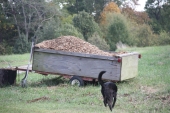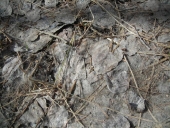
 1
1




Central Taiwan. Pan-tropical Growing zone 10A?








To understand permaculture is simply to look at how nature has been growing things for thousands of years. The 'secret' is simply to keep the soil covered with plants or mulch.




dan long wrote:Is there any accuracy to this statement?
My project thread
Agriculture collects solar energy two-dimensionally; but silviculture collects it three dimensionally.








Tim Malacarne wrote:... I used the California Hot Method, as usual. Pile seemed to heat up OK, but it sure has the sticks, still, and I wasn't prepared for that!. Best, TM
My project thread
Agriculture collects solar energy two-dimensionally; but silviculture collects it three dimensionally.
 2
2




dan long wrote:Is there any accuracy to this statement?
Seed the Mind, Harvest Ideas.
http://farmwhisperer.com




Moderator, Treatment Free Beekeepers group on Facebook.
https://www.facebook.com/groups/treatmentfreebeekeepers/









Ken Peavey wrote:
dan long wrote:Is there any accuracy to this statement?
Yup.
Leaves are primarily composed of lignin. Bacteria can not produce the enzyme Lignase, which is required to break down lignin. ONLY fungi can produce lignase.
Bacteria will break down cellulose, heating the heap in the process. A hot compost pile can kill off the fungi. When the heap cools, the fungi will move back in to finish the job. Without the leaves, the compost heap will be finished considerably sooner. Segregate the leaves into their own heap for decomposition. While there will be some bacterial decay, the leaf heap will not reach the extreme temperatures, giving the fungi the opportunity to establish a population and get to work sooner.
Leaf mold (Thread, Article) differs from compost. Where compost is rich in nutrients, leaf mold is rich in minerals.
To understand permaculture is simply to look at how nature has been growing things for thousands of years. The 'secret' is simply to keep the soil covered with plants or mulch.
 1
1




![Filename: 2014-05-08-15.27.09-w.jpg
Description: [Thumbnail for 2014-05-08-15.27.09-w.jpg]](/t/35618/a/16881/2014-05-08-15.27.09-w.jpg)
To understand permaculture is simply to look at how nature has been growing things for thousands of years. The 'secret' is simply to keep the soil covered with plants or mulch.









Owner, Etta Place Cider




jdwheeler42
http://goingupslope.blogspot.com/
 2
2




John Polk wrote:120*F is not considered 'hot composting'.
To do hot composting, you need to reach temps in the 160-170* range.
When you get to the 160-170 range, the fungi will slow down until your temps get back to a cold composting temp (+/-120*) after the bacteria have done their job (ran out of food), and begin dieing off.
With a lot of leaves, you are better off doing them apart from the rest unless you have tons of greens (N).
If you have lots of greens, add enough leaves to get your 30:1 C:N ratio.
Too much N, your pile will just rot.
Not enough N, your pile stays cold (+/-120*).
 1
1




dan long wrote:Is there any accuracy to this statement?
If that were the case, wouldn't that mean that sawdust wouldn't break down in a compost pile (im thinking Jenkins) until the pile cooled down enough for fungus to infiltrate?
What does that mean in practical application for composting? Should leaves and wood chips be kept out of the compost pile?
I heard that leaf piles will heat up. I thought only bacteria give off heat when they are at work. What gives?


 1
1




I am the first generation of my family to grow up on the grid eating out of the super market. I hope to be the last.




To understand permaculture is simply to look at how nature has been growing things for thousands of years. The 'secret' is simply to keep the soil covered with plants or mulch.




![Filename: 2014-05-13-09.41.55-w.jpg
Description: [Thumbnail for 2014-05-13-09.41.55-w.jpg]](/t/35618/a/16989/2014-05-13-09.41.55-w.jpg)
![Filename: 2014-05-13-10.17.21-w.jpg
Description: [Thumbnail for 2014-05-13-10.17.21-w.jpg]](/t/35618/a/16990/2014-05-13-10.17.21-w.jpg)
To understand permaculture is simply to look at how nature has been growing things for thousands of years. The 'secret' is simply to keep the soil covered with plants or mulch.

|
I'm not dead! I feel happy! I'd like to go for a walk! I'll even read a tiny ad:
Freaky Cheap Heat - 2 hour movie - HD streaming
https://permies.com/wiki/238453/Freaky-Cheap-Heat-hour-movie
|





